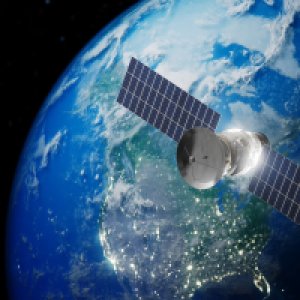Two Chinese satellites, Shijian-21 and Shijian-25, are gearing up for a significant docking event in geostationary orbit. This experimental mission aims to explore on-orbit refueling, a game-changer for satellite longevity.
Recently, these satellites performed maneuvers that brought them within two degrees of longitude of each other. The docking is set for Wednesday, marking China’s first attempt at in-orbit refueling, which could act like a gas station in space. This innovation may extend the lifespan of satellites, a critical development for space missions.
The Shijian-21 spacecraft, launched in 2021, previously showcased its capabilities by docking with and towing a defunct satellite to a safer orbit. Shijian-25, launched in January, is expected to be the one fueling Shijian-21 during the upcoming test. About 313 pounds (142 kilograms) of hydrazine will be transferred, potentially extending Shijian-21’s life by eight years.
The U.S. is keeping a close watch on these developments. Two U.S. surveillance satellites have moved closer to observe the Chinese docking from a distance. There are concerns within the Pentagon that this technology could enhance China’s space capabilities.
Historically, the U.S. has dabbled in in-orbit refueling, with Northrop Grumman successfully refueling a satellite in 2019, extending its operational life by five years. The U.S. Space Force is also planning its refueling tests, showing that this technology is becoming increasingly important in space strategy.
As space exploration continues to evolve, the ability to refuel in orbit could be vital for maintaining and extending satellite missions, making this event worth watching closely.
For further details on satellite maneuvers, you can check SpaceNews.
Source link
China,Low Earth orbit,Satellite





















